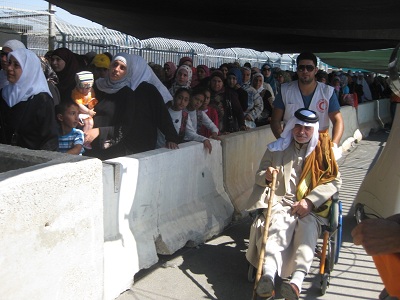Source(google.com.pk)
Palestine Partition Biography
The first partition of Palestine took place in 1922, when the British government excluded Transjordan from the area to which the provisions of the *Balfour Declaration would apply. The Zionist Executive reluctantly acquiesced in this decision. The *Revisionist movement, established in 1925, hotly opposed the separation of Transjordan; its basic slogan was "a Jewish state on both sides of the Jordan." The idea of partitioning western Palestine between Jews and Arabs was first broached officially in 1937 by the Palestine Royal Commission (see *Palestine, Inquiry Commissions, Peel Commission) as a method of enabling each nation to exercise sovereignty and achieve its principal national aims in part of the country while maintaining a British foothold centered in Jerusalem. The proposal was at first approved by the British government and accepted in principle, after a vigorous controversy, by the majority of the yishuv and the Zionist movement. The British withdrew their support, however, after the Palestine Partition Commission (the Woodhead Commission, see below) had failed to produce a "practicable" partition plan, and instead adopted in 1939 the *White Paper policy, which would ultimately have created an independent Palestinian state with a permanent Arab majority.
The abortive Morrison-Grady scheme of 1946 (see below), which would have left more than two-fifths of the country in British hands and given neither Arabs nor Jews more than limited autonomy, was rejected by both sides, and it was not until Britain put the problem before the United Nations that a new partition plan was evolved. This was done by the UN Special Committee on Palestine (UNSCOP, see below), which recommended the establishment of a Jewish and an Arab state joined in an economic union, with Jerusalem and its environs as a separate international enclave. This proposal was accepted by the Jews and rejected by the Arabs, while the British refused to play any part in implementing it.
The partition of western Palestine was not merely a theoretical proposal, but one of the possibilities inherent in the situation created by two generations of Zionist settlement before and during the British *Mandate. Jewish land purchases, mainly by the *Jewish National Fund, and the establishment of Jewish towns and villages had created areas of contiguous Jewish settlement, with a self-reliant and economically viable community that was prepared and able to defend itself and institutions of self-government based upon the voluntary allegiance of the Jewish population. Without such a yishuv, fortified by the moral, political, and financial support of Jews around the world, no decision by any external body could have been implemented. Ultimately, the partition of western Palestine was the result of two forces: the capacity of the yishuv to hold its own by force against the attacks of Palestinian Arabs and the surrounding Arab states on the one hand, and the inability of the yishuv to gain control of the whole of western Palestine, on the other. The following are the details of the partition plans presented by the various commissions and committees.
Palestine Royal Commission
(See *Palestine, Inquiry Commissions). This commission, often referred to as the Peel Commission, published its report on July 7, 1937. It came to the conclusion that partition was the best solution for both sides. Although this proposal meant neither Jews nor Arabs would get all they wanted, the commission believed that it offered many advantages to both sides. The Arabs would obtain national independence and finally be delivered from fear of ultimate subjection to Jewish rule. By converting the Jewish National Home into a Jewish state, the Jews would not only be free of the fear of Arab rule, but they "will attain the primary objective of Zionism – a Jewish nation, planted in Palestine, giving its nationals the same status in the world as other nations give theirs. They will cease at last to live a 'minority life.' A new sense of confidence and security would replace the existing feeling of fear and suspicion and both Jews and Arabs would obtain the inestimable boon of peace." (See Map: Peel Partition Plan).
The commission therefore proposed that Palestine be divided into
(1) a Jewish state, comprising the whole of Galilee and the Jezreel Valley, most of the Beth-Shean Valley, and the Coastal Plain from Ras el-Nakura (Rosh ha-Nikrah) on the Lebanese border to Be'er Tuviyyah in the south;
(2) an Arab state comprising Transjordan, the hill country of Samaria and Judea, and the Negev;
(3) a British zone under permanent Mandate, consisting of Jerusalem, Bethlehem, and their environs, a corridor to the coast at Jaffa, and Nazareth. British treaties of alliance with the Jewish and the Arab state would guarantee the protection of minorities, facilities for British forces, etc., and the Jewish state would pay a subvention to the Arab state. (For details of proposed boundaries, see *Israel, Land of: Geographical Survey.)
The 20th Zionist Congress (Zurich, Aug. 3–17, 1937) declared that the Peel Commission's scheme was "unacceptable," but empowered the Executive to negotiate with the British government on "precise terms" for the establishment of "a Jewish state," provided that any scheme that might emerge would be submitted for approval to a newly elected Congress










Palestine Partition Biography
The first partition of Palestine took place in 1922, when the British government excluded Transjordan from the area to which the provisions of the *Balfour Declaration would apply. The Zionist Executive reluctantly acquiesced in this decision. The *Revisionist movement, established in 1925, hotly opposed the separation of Transjordan; its basic slogan was "a Jewish state on both sides of the Jordan." The idea of partitioning western Palestine between Jews and Arabs was first broached officially in 1937 by the Palestine Royal Commission (see *Palestine, Inquiry Commissions, Peel Commission) as a method of enabling each nation to exercise sovereignty and achieve its principal national aims in part of the country while maintaining a British foothold centered in Jerusalem. The proposal was at first approved by the British government and accepted in principle, after a vigorous controversy, by the majority of the yishuv and the Zionist movement. The British withdrew their support, however, after the Palestine Partition Commission (the Woodhead Commission, see below) had failed to produce a "practicable" partition plan, and instead adopted in 1939 the *White Paper policy, which would ultimately have created an independent Palestinian state with a permanent Arab majority.
The abortive Morrison-Grady scheme of 1946 (see below), which would have left more than two-fifths of the country in British hands and given neither Arabs nor Jews more than limited autonomy, was rejected by both sides, and it was not until Britain put the problem before the United Nations that a new partition plan was evolved. This was done by the UN Special Committee on Palestine (UNSCOP, see below), which recommended the establishment of a Jewish and an Arab state joined in an economic union, with Jerusalem and its environs as a separate international enclave. This proposal was accepted by the Jews and rejected by the Arabs, while the British refused to play any part in implementing it.
The partition of western Palestine was not merely a theoretical proposal, but one of the possibilities inherent in the situation created by two generations of Zionist settlement before and during the British *Mandate. Jewish land purchases, mainly by the *Jewish National Fund, and the establishment of Jewish towns and villages had created areas of contiguous Jewish settlement, with a self-reliant and economically viable community that was prepared and able to defend itself and institutions of self-government based upon the voluntary allegiance of the Jewish population. Without such a yishuv, fortified by the moral, political, and financial support of Jews around the world, no decision by any external body could have been implemented. Ultimately, the partition of western Palestine was the result of two forces: the capacity of the yishuv to hold its own by force against the attacks of Palestinian Arabs and the surrounding Arab states on the one hand, and the inability of the yishuv to gain control of the whole of western Palestine, on the other. The following are the details of the partition plans presented by the various commissions and committees.
Palestine Royal Commission
(See *Palestine, Inquiry Commissions). This commission, often referred to as the Peel Commission, published its report on July 7, 1937. It came to the conclusion that partition was the best solution for both sides. Although this proposal meant neither Jews nor Arabs would get all they wanted, the commission believed that it offered many advantages to both sides. The Arabs would obtain national independence and finally be delivered from fear of ultimate subjection to Jewish rule. By converting the Jewish National Home into a Jewish state, the Jews would not only be free of the fear of Arab rule, but they "will attain the primary objective of Zionism – a Jewish nation, planted in Palestine, giving its nationals the same status in the world as other nations give theirs. They will cease at last to live a 'minority life.' A new sense of confidence and security would replace the existing feeling of fear and suspicion and both Jews and Arabs would obtain the inestimable boon of peace." (See Map: Peel Partition Plan).
The commission therefore proposed that Palestine be divided into
(1) a Jewish state, comprising the whole of Galilee and the Jezreel Valley, most of the Beth-Shean Valley, and the Coastal Plain from Ras el-Nakura (Rosh ha-Nikrah) on the Lebanese border to Be'er Tuviyyah in the south;
(2) an Arab state comprising Transjordan, the hill country of Samaria and Judea, and the Negev;
(3) a British zone under permanent Mandate, consisting of Jerusalem, Bethlehem, and their environs, a corridor to the coast at Jaffa, and Nazareth. British treaties of alliance with the Jewish and the Arab state would guarantee the protection of minorities, facilities for British forces, etc., and the Jewish state would pay a subvention to the Arab state. (For details of proposed boundaries, see *Israel, Land of: Geographical Survey.)
The 20th Zionist Congress (Zurich, Aug. 3–17, 1937) declared that the Peel Commission's scheme was "unacceptable," but empowered the Executive to negotiate with the British government on "precise terms" for the establishment of "a Jewish state," provided that any scheme that might emerge would be submitted for approval to a newly elected Congress
Palestine Partition

Palestine Partition

Palestine Partition

Palestine Partition

Palestine Partition

Palestine Partition

Palestine Partition

Palestine Partition

Palestine Partition

Palestine Partition

Palestine Partition
No comments:
Post a Comment